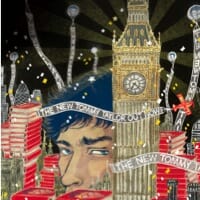Comic Book & Graphic Novel Round-Up (3/23/11)

Every Wednesday, Paste looks at some of the most intriguing comic books, graphic novels, graphic memoirs and other illustrated books.

Dungeon Quest Book Two by Joe Daly
Fantagraphics, March 2011
Rating: 8.2
The second volume of Joe Daly’s stoner RPG epic Dungeon Quest begins immediately where the first one ended. Millennium Boy, a tough little bastard with a comically swollen head and a taste for psychedelics, leads a party of friends and adventurers deep into a spooky forest in search of the renown mystic Bromedes and an ancient guitar from Atlantis. Along the way they kill monsters, discover secret towers, solve Masonic puzzles, and eventually accomplish one of their two goals. Not that any of that matters. Plot in Dungeon Quest is secondary to ridiculous humor and Daly’s furiously hatched artwork. Daly’s black and white art is still striking , with his cartoonish figures swallowed up by intensely detailed fantasy backgrounds. Several pages are devoted to people walking in silence, but you’ll still linger hard on those pages to study the intricate environments. In the first Dungeon Quest Daly crafted something like beat poetry by undercutting the absurd solemnity of a Dungeons & Dragons campaign with juvenile drug humor and constant slang from Daly’s native South Africa. Book two is slightly less human but just as hilarious, ramping up both the drugs and the meta role-playing game references. (GM)

The Unwritten Vol. 3: Dead Man’s Knock by Mike Carey and Peter Gross
Vertigo/DC, March 2011
Rating: 8.6
-

-

-

-

-

-

-

-

-

-

-

-

-

-

-

-

-

-

-

-

-

-

-

-

-

-

-

-

-

-

-

-

-

-

-

-

-

-

-

-










































